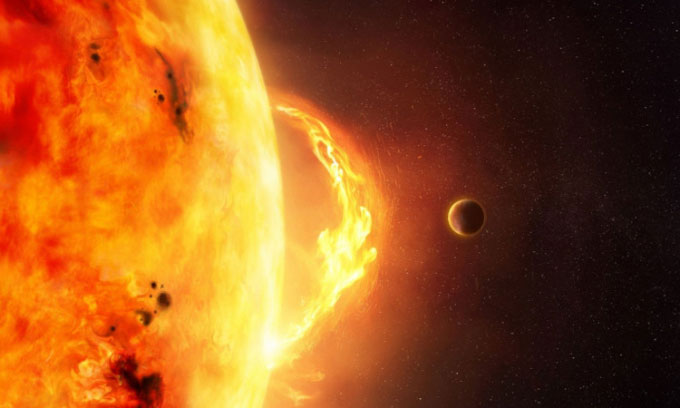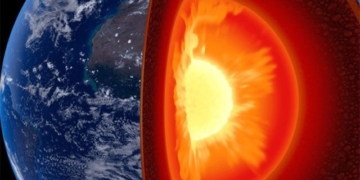Two geomagnetic storms caused by solar activity reached Earth on March 14 and March 15, but did not cause significant damage.
Geomagnetic storms occur when a large amount of charged particles is ejected from the corona of the Sun. This event is known as a coronal mass ejection (CME). The stream of charged particles is released at speeds of up to millions of kilometers per hour. When they reach Earth, they interact with the planet’s protective magnetic field, causing geomagnetic storms and auroras.

Simulation of a solar eruption with a nearby planet. (Photo: solarseven/iStock).
The storms earlier this week were not strong, and the most notable effect may have been allowing people to see the aurora borealis in areas further south, such as New York and Idaho, according to the National Oceanic and Atmospheric Administration (NOAA). NOAA reported that the storm on March 14 was classified as G2, while the storm on March 15 was classified as G1, based on a 5-level solar storm scale with G5 being the strongest.
Earth typically experiences over 2,000 G1 and G2 solar storms each decade. Stronger storms can have significant consequences. The most recent damage from a geomagnetic storm occurred last month when 40 SpaceX Starlink satellites were destroyed. The storm increased atmospheric density in the low Earth orbit where the satellites were operating, increasing drag and causing them to fall out of orbit.
Satellites and space equipment are the most vulnerable to damage, but the effects of solar storms can also be felt on Earth. The powerful solar storm of 1989 cut off electricity for over 6 million people for nearly 10 hours in Quebec and surrounding areas. It also caused the Toronto Stock Exchange to halt operations for several hours due to computer failures. All of this occurred before the internet became widespread, and a similar storm today could cause widespread power outages.
In a study last year, Associate Professor Abdu Jyothi at the University of California, Irvine, warned that humanity is still unprepared for a stronger geomagnetic storm. Jyothi pointed out that the global internet relies heavily on undersea cables and their electronic repeaters, which could be destroyed by a strong storm, leading to an “internet apocalypse.” Jyothi argued that human infrastructure is not ready for a large-scale solar event and that we understand very little about the risk of damage.
The Sun is nearing the peak of its periodic activity cycle. The solar maximum occurs once every 11 years, with the next one expected around July 2025. Solar activity is likely to continue increasing until then.


















































